Doing users studies is fascinating, once you get to the point of actually talking to the participants. But the step before, on recruiting them, can be a pain!
This (long) post is in response to Danny’s experience on recruiting using Facebook and Twitter ads. A couple of weeks after he did his recruitment ads, I asked him advice on how to reach a broader sample when snowball sampling and traditional word or mouth (i.e. posting for free on any social media and sending out emails) was not enough, and he recommended trying out Facebook and Twitter ads.
For my study I had to recruit English-speaking participants for an interview study on the use smartwatches, which could take place in person or on Skype. Users could therefore live anywhere in the UK. Because the Twitter ad did not lead to any participant signing up, I will focus this post on my experience with Facebook ads and at the end of the post there are some useful take-home considerations.
So I created a Facebook ad (you can see Danny’s post for a step-by-step process on how to). The ad linked to a website, where people had to complete a recruitment survey, before they were contacted to take part in the interview. Here you can see a summary of my recruitment criteria and some overall results:
As you can see, the selection criteria was very broad: be 18-65+ old, speak English, with interests in popular and specific smartwatch brands (e.g. Pebble, Moto360, etc.) but also in more general ‘wearable computer’ and ‘smartwatch’. The ad ran from Sunday to Sunday. The estimated daily reach was between 2,400-6.200 (this is highly dependent on how much you are willing to pay).
Looking at the data a bit more in detail, you can see how clicks are broken down:
I reached in total 17,045 people, 92% of which were men. Of the men, 82% were aged between 18-54 years old. Overall, the majority of clicks came from 45-54 year old men (34%). Perhaps not surprisingly, very few women were reached (and that would explain why I only recruited men).
Interestingly, in proportion, women cost me more than men:
As far as ad placement, this is probably less relevant for the purpose of the recruitment, but it’s still interesting data:
The first image shows how many people the ad reached based on where the ad was placed. 78% of people viewed the ad when it was placed on the right column of their desktop and that is also where I got the most clicks from. Given that people had to fill out a survey, this is probably not that surprising. The website the ad linked to was also mobile friendly and indeed almost a third of clicks (28%) came from mobile devices.
The second image breaks down the mobile phone data even more. The majority of those clicks came from Android devices. Speculating, this is not necessarily surprising given the audience I was targeting and the wide range of Android wear devices available at the time. At the time of the ad the Apple Watch was still not announced (yet alone for sale), so the only smartwatch that iPhone users could by was the Pebble. Although I did recruit several people with a Pebble, these did not all have iPhones.
The last interesting graph I want to share is on day by day reach. 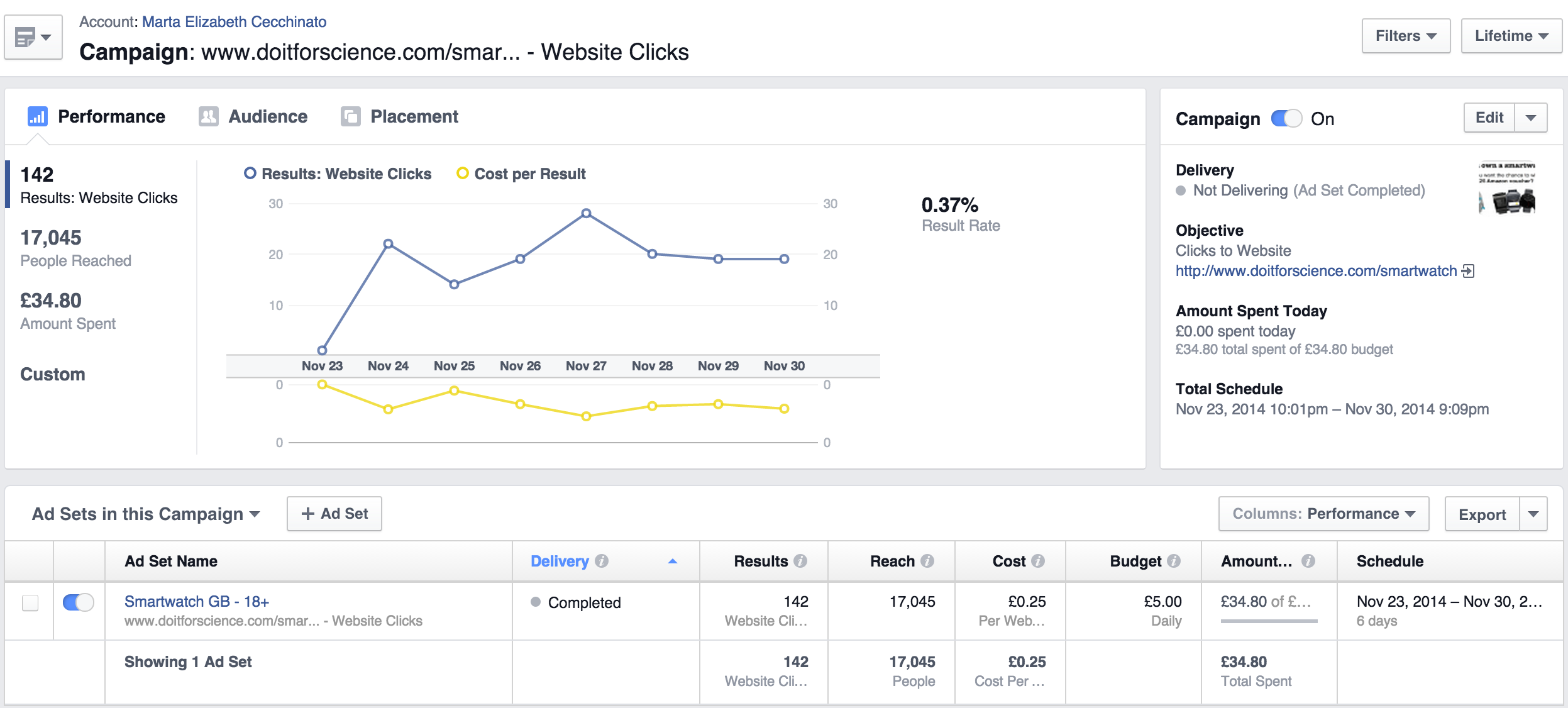
Like I said, I ran the ad from a Sunday (23rd Nov.) to a Sunday (30th Nov.). The peak of website clicks was on the 27th, a Thursday, followed by the Monday 24th. Unfortunately it’s not possible to show this graph where website clicks are compared to reach – facebook only offers a cumulative reach in this graph.
To summarise, with this ad I reached 17.045 people, and got 142 clicks. How many of those people actually filled out the survey? Less then 10, and some of them were fill out as a joke.
So, what went wrong?
I turned to my friend who works in marketing. Her job is to help people successfully launch campaigns online and therefore heavily relies on facebook ads. (I know, I know.. why didn’t I ask her advice earlier?!). Here is what I learnt from her and what I would recommend if you want to create facebook ads to recruit participants:
- Duration of ad: 1 week is fine.
- Estimate audience should be around 15-20 thousand people (this depends on how much you are willing to spend).
- Get audience insights *before* you create your ad! This was the best piece of advice! To do so, you need to set setting to USA, because UK settings don’t allow this feature. Basically it allows you to understand who the people you are trying to reach are, based on gender, age, interests, location, etc.Here’s a link: https://www.facebook.com/business/news/audience-insights
- Don’t use generic key words, but only specific brands that relate to products. You could also target readers of particular magazines. People who usually like a generic page “smartwatch” will most probably not have a smartwatch.
- People buy more online on Wednesdays, Thursdays, Fridays and Sundays. Nobody buys on Monday. Looking back at my data, I can see that this sort of applies also if you are recruiting participants: wednesday was definitely my most successful day. However, Monday was the second most successful day in my campaign so I’m not sure that marketing strategies here necessarily apply.
Other useful insights:
- Track clicks on the actual website the ad links to. I didn’t think of doing this at the time unfortunately. However, with Google Analytics you can easily monitor who visits your website and this would have allowed me to see how many people actually were referred by the facebook ad.
- Alternatively, use conversion tracking on your website. This creates a pixel that you can add on your website and tacks what actions people take on your website.Here the link: https://www.facebook.com/ads/manage/convtrack/?act=10930981
- Do consider banner blindness. People subconsciously ignore ads, especially young ones.
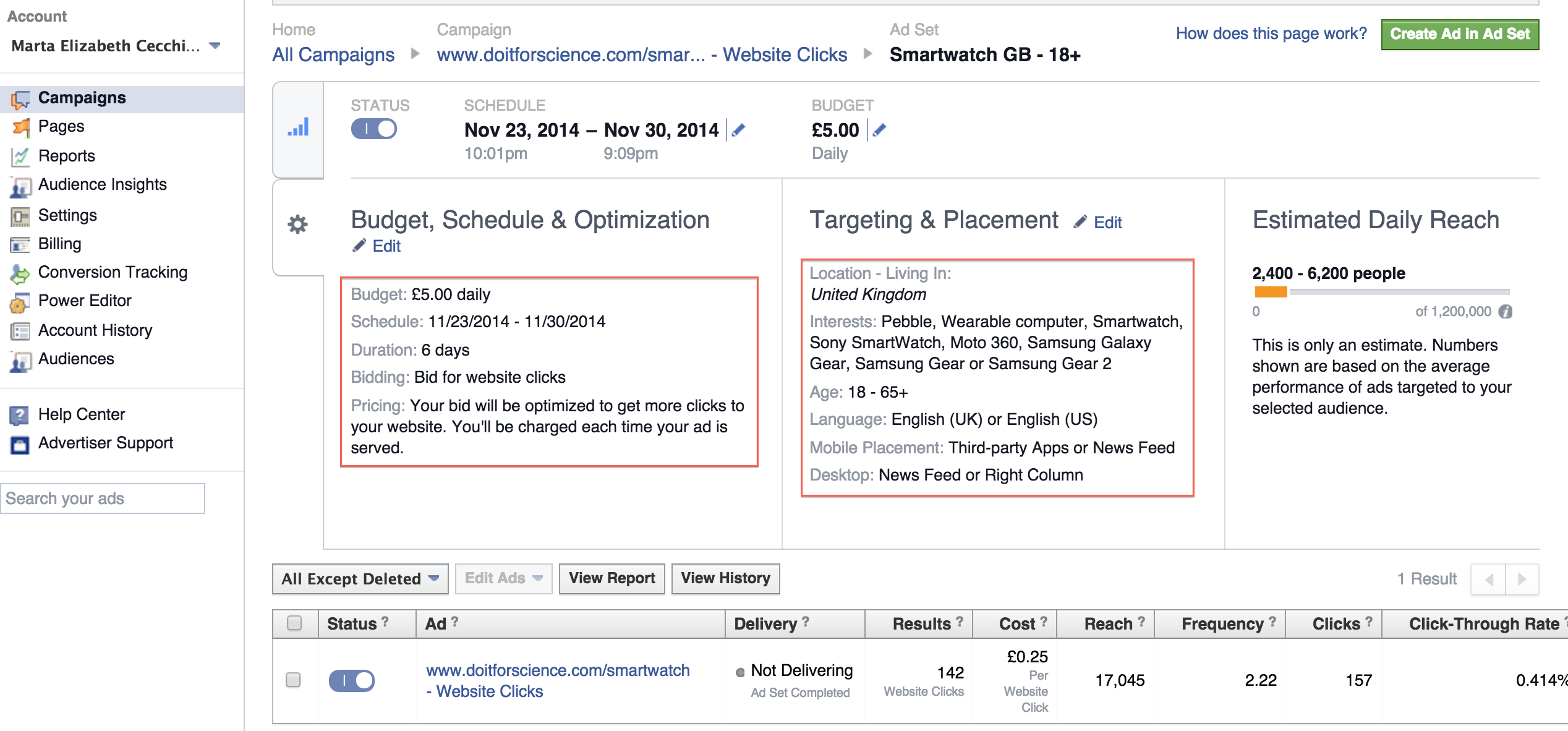
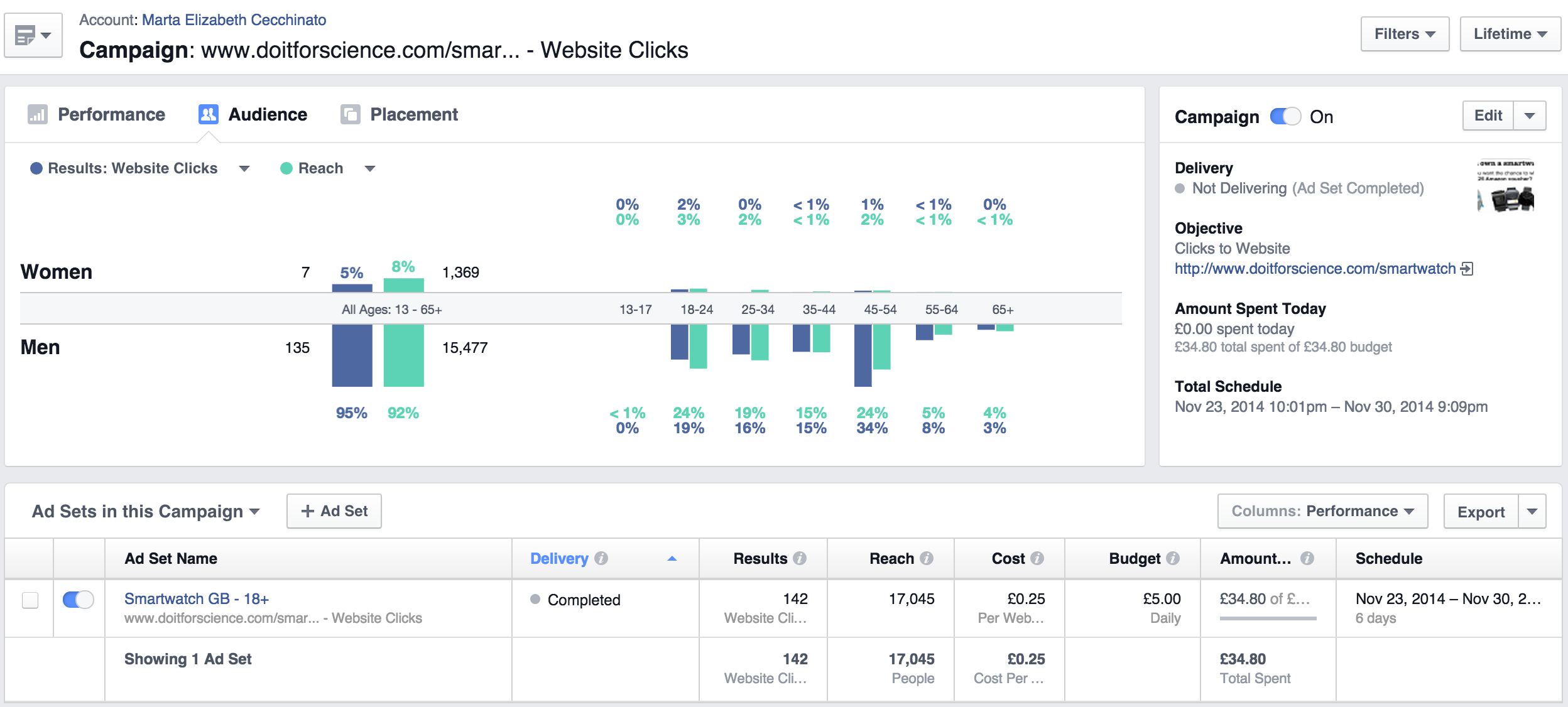
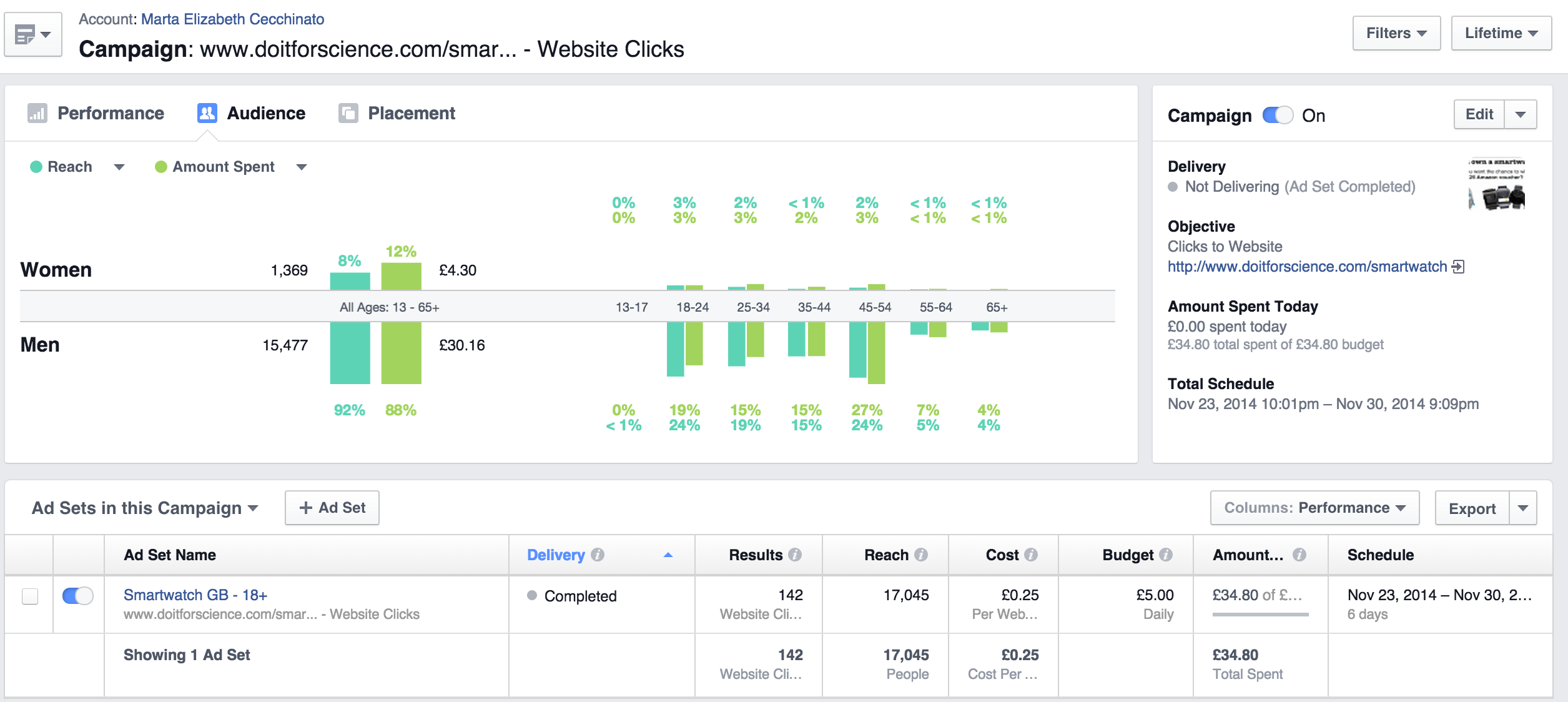
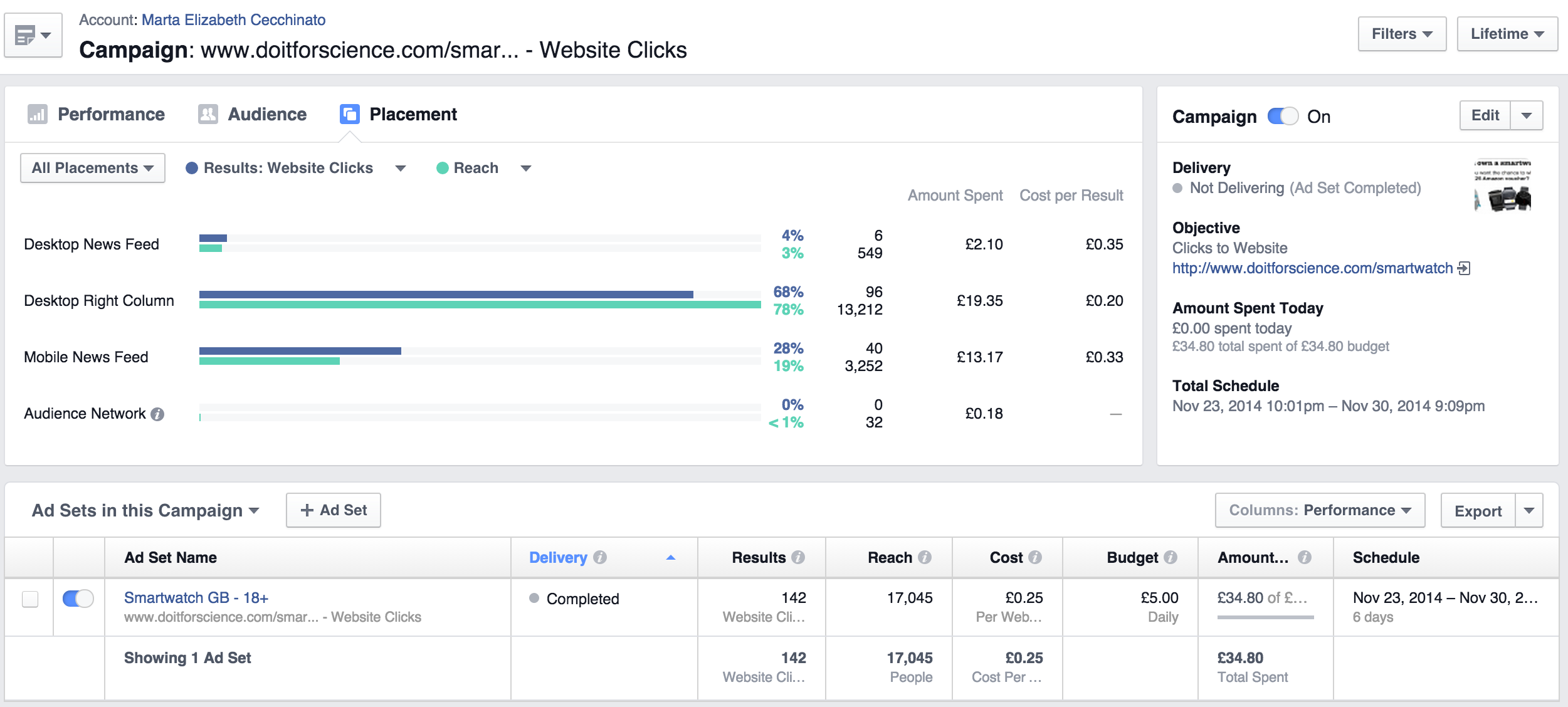


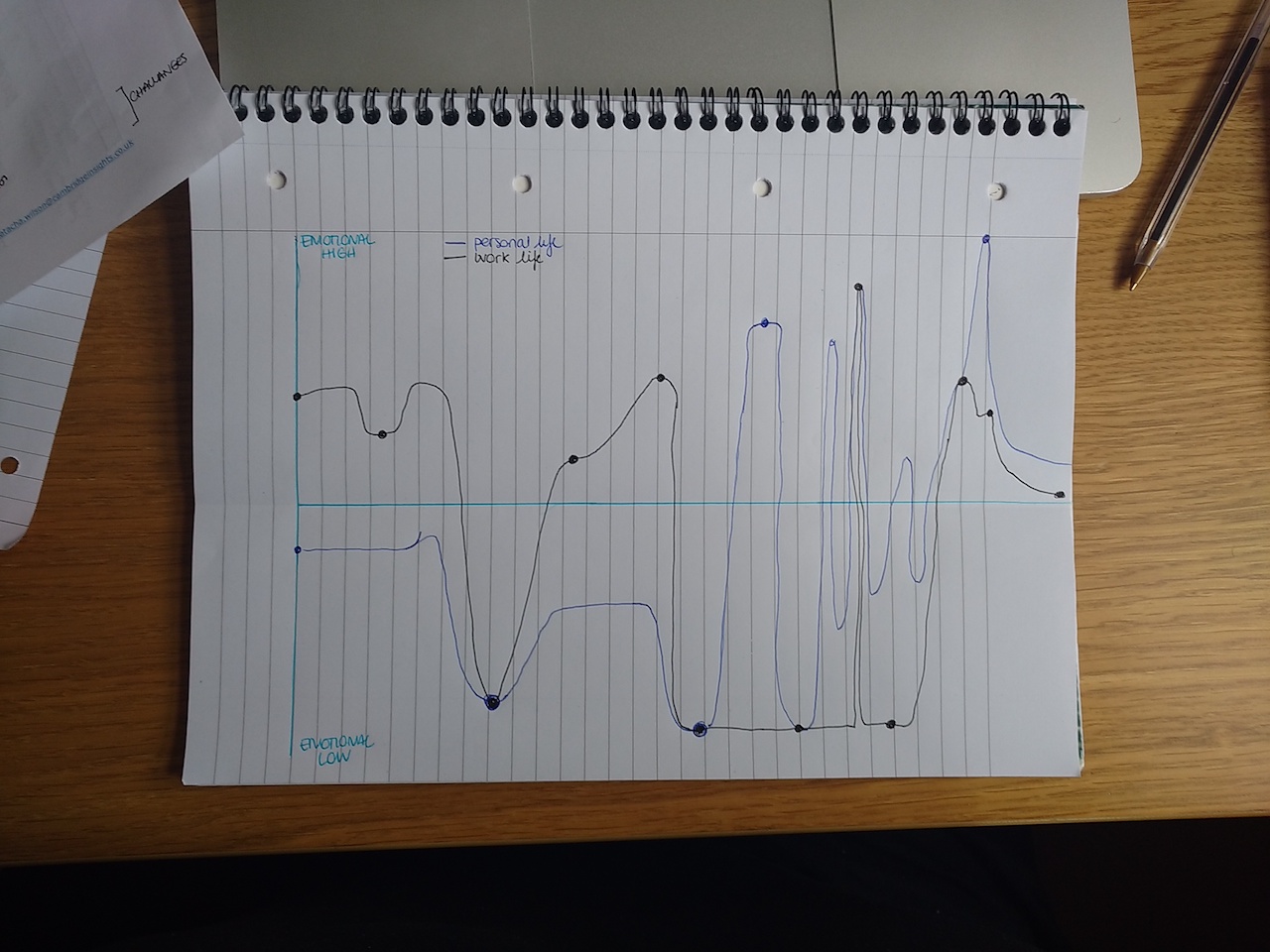

1 Comment
Recruiting participants | Digital Boundaries · 27th April 2016 at 12:15 am
[…] How to use social media ads to recruit participants […]